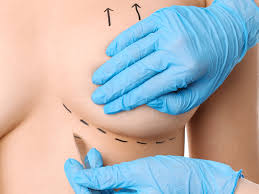Understanding the Pain and Recovery Process of Breast Augmentation
Dec-15-2024

Breast augmentation, also known as augmentation mammoplasty, is a popular cosmetic procedure designed to enhance the size and shape of the breasts. Despite its widespread popularity, many people considering this surgery have concerns about whether the procedure is painful and what the recovery process entails. This article aims to provide an in-depth understanding of the potential discomfort associated with breast augmentation and how to manage it effectively.
What Is Breast Augmentation?
Breast augmentation involves the placement of implants or fat transfer to increase the size of the breasts, improve symmetry, or restore volume lost due to weight changes, aging, or pregnancy.
The procedure typically includes:
- Incision Placement: Common incision sites include under the breast fold, around the areola, or in the armpit.
- Implant Insertion: The implants are placed either above or below the chest muscles.
- Suturing and Recovery: The incisions are closed, and the healing process begins.
Does Breast Augmentation Hurt?
During the Procedure
Breast augmentation is performed under general anesthesia, ensuring you feel no pain during the surgery. The anesthesiologist monitors your vital signs throughout the procedure, ensuring your comfort and safety.
Post-Surgery Discomfort
After the anesthesia wears off, it’s common to experience mild to moderate discomfort. The pain level can vary based on factors such as:
- The placement of the implant (submuscular placement may cause more soreness).
- Your individual pain threshold.
- The surgical technique used.
The discomfort often feels like muscle soreness or tightness in the chest area. It typically subsides within a few days to weeks with proper care and medication.
Managing Pain After Breast Augmentation
- Pain Medications: Surgeons usually prescribe pain relief medications to manage post-operative discomfort.
- Cold Compresses: Applying cold packs to the chest can help reduce swelling and alleviate pain.
- Supportive Bras: Wearing a surgical or supportive bra minimizes movement and supports healing.
- Rest and Limited Activity: Avoid strenuous activities and heavy lifting during the initial recovery phase.
- Follow-Up Appointments: Regular check-ups with your surgeon ensure proper healing and address any concerns.
Factors Affecting Pain Levels
-
Implant Placement:
- Subglandular Placement: Implants placed above the chest muscle may result in less pain.
- Submuscular Placement: Implants placed under the muscle can cause more post-surgical soreness.
-
Size of Implants: Larger implants may stretch the tissues more, potentially leading to increased discomfort.
-
Individual Pain Tolerance: Pain perception varies from person to person.
-
Surgical Technique: Advanced techniques can minimize tissue trauma and reduce post-operative pain.
The Recovery Process
The recovery process can be divided into several phases:
Immediate Recovery (First Week)
- Expect swelling, bruising, and mild to moderate pain.
- Avoid sleeping on your stomach to reduce pressure on the chest.
Weeks 2-4
- Discomfort gradually decreases.
- You may resume light activities but avoid high-impact exercises.
Months 2-6
- Full recovery typically takes a few months.
- Scars fade over time, and the breasts settle into their final shape.
Tips for a Smooth Recovery
- Follow Post-Operative Instructions: Adhere to your surgeon’s guidelines for care and activity restrictions.
- Stay Hydrated: Proper hydration supports healing.
- Eat a Nutritious Diet: A balanced diet with adequate protein aids tissue repair.
- Avoid Smoking and Alcohol: These can impede healing and increase the risk of complications.
FAQs
1. How long does the pain last after breast augmentation?
Pain typically subsides within 1-2 weeks. Some soreness and tightness may persist for a few months as the tissues adjust.
2. Can I manage pain without prescription medications?
Over-the-counter pain relievers, like ibuprofen, may suffice for mild discomfort, but always consult your surgeon before taking any medication.
3. Is it normal to feel tightness in the chest after the surgery?
Yes, tightness is common as the skin and muscles stretch to accommodate the implants. It usually improves within a few weeks.
4. Will I feel pain during follow-up procedures like implant adjustments?
Most follow-up procedures involve minimal discomfort compared to the initial surgery.
5. Can I speed up the recovery process?
Recovery cannot be rushed, but following your surgeon’s instructions and leading a healthy lifestyle can promote healing.
Conclusion
Breast augmentation is generally well-tolerated, with manageable discomfort that subsides over time. Understanding the procedure, knowing what to expect during recovery, and following post-operative care instructions can significantly ease the process. If you’re considering breast augmentation, consult with a qualified surgeon to address any concerns and ensure a safe, successful experience.











Luxe Team